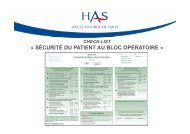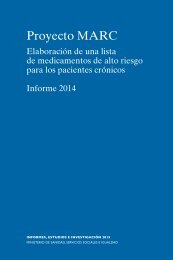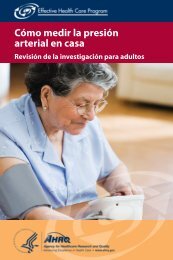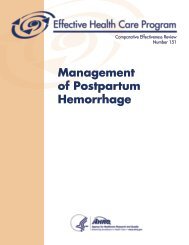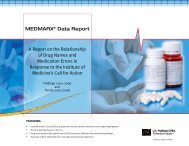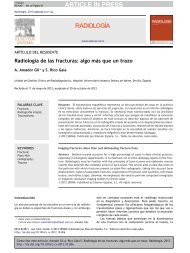for Invasive Procedures (NatSSIPs)
Z3q53
Z3q53
Create successful ePaper yourself
Turn your PDF publications into a flip-book with our unique Google optimized e-Paper software.
OFFICIAL<br />
3.4 About this document<br />
3.4.1 Terminology<br />
What the words “must” and “should” mean in this document<br />
When used in this document, the word “must” implies that providers of NHS-funded<br />
care have to include this action or fulfil this recommendation in their LocSSIPs in<br />
order to be compliant with the <strong>NatSSIPs</strong> set out in this document. It is anticipated that<br />
Commissioners will include the development of LocSSIPs and their compliance with<br />
<strong>NatSSIPs</strong> in contracts with providers, and that the Care Quality Commission will use<br />
this document as a standards framework <strong>for</strong> use in assessments and visits.<br />
The word “should” implies that it would be expected that providers of NHS-funded<br />
care would include this action or fulfil this recommendation in their LocSSIPs in order<br />
to be compliant with the <strong>NatSSIPs</strong> set out in this document. However, if a careful and<br />
documented risk analysis of local conditions confirms that the inclusion of a particular<br />
action or recommendation is not necessary <strong>for</strong> the delivery of safe care <strong>for</strong> patients<br />
undergoing invasive procedures in that organisation, a LocSSIP can be implemented<br />
that omits the action or recommendation provided its omission is regularly reviewed.<br />
The phrase “should consider” implies that providers of NHS-funded care must<br />
consider the inclusion of this action or fulfilment of this recommendation in their<br />
LocSSIPs in order to be compliant with the standards set out in this document. The<br />
details of such considerations need not be documented, but organisations should be<br />
prepared to be challenged by regulatory agencies on decisions not to include such<br />
actions or recommendations.<br />
3.4.2 Scope<br />
What are invasive procedures?<br />
The National Institute <strong>for</strong> Health and Care Excellence (NICE) defines an<br />
“interventional procedure” as a procedure used <strong>for</strong> diagnosis or <strong>for</strong> treatment that<br />
involves 8 :<br />
• Making a cut or a hole to gain access to the inside of a patient's body - <strong>for</strong><br />
example, when carrying out an operation or inserting a tube into a blood<br />
vessel, or<br />
• Gaining access to a body cavity (such as the digestive system, lungs,<br />
womb or bladder) without cutting into the body - <strong>for</strong> example, examining or<br />
carrying out treatment on the inside of the stomach using an instrument<br />
inserted via the mouth, or<br />
• Using electromagnetic radiation (which includes X-rays, lasers, gammarays<br />
and ultraviolet light) - <strong>for</strong> example, using a laser to treat eye<br />
problems.<br />
8 http://www.nice.org.uk/about/what-we-do/our-programmes/nice-guidance/nice-interventionalprocedures-guidance<br />
14



